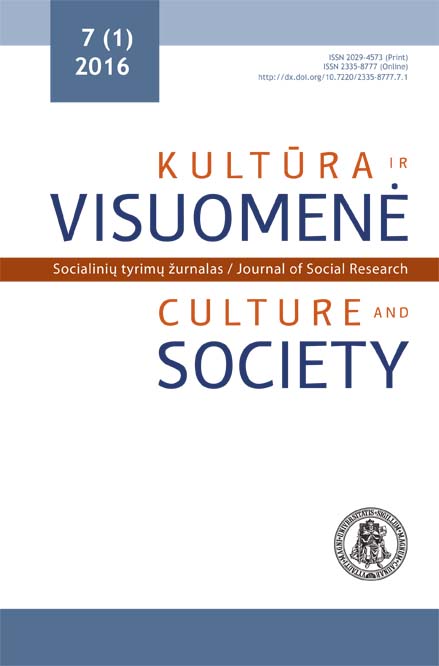Posūkis link naujo šeimos kūrimo ir gimstamumo modelio
Turn Towards a New Family Formation and Fertility Pattern
Author(s): Dovilė GaldauskaitėSubject(s): Social Sciences, Gender Studies, Sociology, Health and medicine and law, Family and social welfare, Demography and human biology
Published by: Vytauto Didžiojo Universitetas
Keywords: Second demographic transition; Modern family; Family formation; Childbearing behaviour; Individualisation;
Summary/Abstract: The theory of second demographic transition (SDT) that was developed in 1980s is presented in the article. The concept of second demographic transition describes matrimonial and childbearing behaviour changes that started just after the mid-1960s in developed countries. The change of family model from traditional to modern, and the growth of cohabitation and divorces are described as the main features of SDT. This transition is influenced by the complex of both micro and macro level economic, social, biological and technological factors, as well as factors associated with values and attitudes: improved social welfare and social security conditions, the development of education system, the rise of modern contraception, individualization, emancipation, self-realization, and gender and sexual revolutions. The diffusion of the SDT transition that is not limited to Europe, but also spreads to Asia and Latin America is also discussed in the article. The diffusion of SDT is also considered to be not a universal but variable process as contextual features are also important in it. The article also points out that SDT is criticized for being not a new transition, but a continuation of the first demographic transition and a set of changes limited to Europe only. Despite the criticism the author concludes that the SDT theory is a well-developed analytical instrument that can be used to analyse changes in demographic behaviour in different contextual conditions.
Journal: Kultūra ir visuomenė: socialinių tyrimų žurnalas
- Issue Year: VII/2016
- Issue No: 1
- Page Range: 53-77
- Page Count: 25
- Language: Lithuanian

